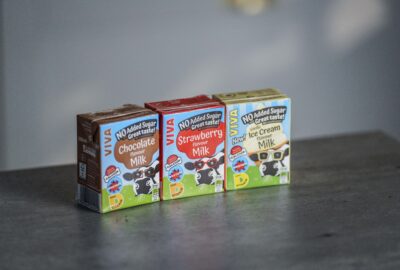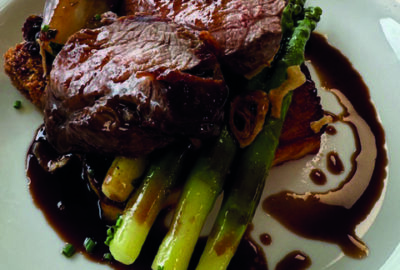Attracting customers into your business can be very challenging when economic conditions are tough, however, the real challenge lies in ensuring each customer contributes substantially to your bottom line. In the hospitality sector, the prospect of low average customer spend looms large and it is capable of casting a shadow over even the busiest establishments.
Why is the average spend per customer so important?
The average spend per customer delivers transparency to managers, and is the tangible value achieved each time a customer steps through your doors. While broader goals like expanding sales or optimising operations might appear daunting, elevating average spend is a more achievable objective with a bigger impact.
Armed with just two key metrics—total sales value and the number of customers served—you can unveil insights into your operation’s financial health. Simply divide your total sales by the number of customers served.
Strategies to support spending
Having crunched the numbers and faced the reality of your current average spend per customer, you may find the figure falling short of expectations. The following are a few strategies that can be implemented to give your average spend per head a boost:
Sides, sauces & storytelling
The first go-to strategy is to improve your upselling techniques. Not everything about this activity is training based, although it certainly helps. “We train all the front of house staff to upsell sides to customers,” comments Matt, Head Chef at The White Lion, Weston. “Upselling little extras like adding cheese to a garlic bread, pepper sauce with a steak and garlic bread with a pasta dish or risotto is something we encourage our staff to do. On occasion we play upsell bingo, staff get bingo cards with things like ‘sell 5 onion rings and sell 2 garlic breads’, a great way to incentivise the staff and make upselling fun.”
Investing in training can negatively impact profitability temporarily, but get it right, and it reaps rewards. Alternatively, if you have employees with a talent for upselling, inviting them to skill share would be a more cost-effective approach. Improving communication between front-of-house staff and your kitchen team is another way to get waiting staff more excited about what’s on the menu, understand how it is created and convey the story to your customers.
“We’ve empowered our staff to act as brand ambassadors,” notes Jon Morgan, CEO, Venture Smarter. “They’re well-versed in the nuances of our menu and are trained to eloquently describe dishes, emphasising the quality and craftsmanship that goes into each one. This storytelling approach has been instrumental in encouraging customers to explore beyond their initial choices, ultimately driving up the average spend.”
Drinks pairings can also be beneficial as beverages tend to deliver higher margin potential. “The impact of enhancing the beverage pairing experience on the average spend per head is significant,” notes Kartik Ahuja. “Our staff are trained to expertly suggest wine or cocktail pairings that complement chosen dishes. Signature or craft beverages with a slightly higher price point are introduced to entice diners and enhance their culinary journey. Consideration is given to creating themed beverage flights or pairing events to elevate the overall dining experience, encouraging patrons to explore diverse drink options.”
Introduce alternative pricing strategies
Often, diners know what the average price of a starter, main meal or dessert is. Changing your menu slightly, adding sharing platters or build-your-own dishes, breaks through this barrier. When a sharing platter individually works out cheaper, customers can then be tempted to indulge with a dessert. Alternatively, offering a number of small plates for customers to select from and share can increase the spend per head as the propensity to over-order is high. To entice diners, think about offering 4 plates for the price of 3, keeping the number low enough for small groups to benefit from the offer and order 1-2 dishes more.
“We have had sharing platters on the menu for the last 12 months,” says Matt. “We also offer a selection of nibbles, like red wine and honey chorizo, whitebait, cauliflower bites. These tend to be ordered in a tapas style and tend not to come with salads or expensive accompaniments. They are simple and inexpensive. A dining party would typically share several dishes to the table as an alternative to starters.
Offering customisation such as build-your-own burgers, nachos, fries or sandwiches can also achieve a similar result. “Our top tip would be to offer a ‘build your own fries’ menu, giving customers a choice of sauces, toppers and extras that can change regularly to offer something fresh and new, but all built around good quality fries” says Pete Evans, Lamb Weston’s UK Marketing Manager.
Customisation is not restricted to personalising each dish. Offering a variety of price points within a menu can help diners select dishes that enable them to stay within budget without compromising on the experience. “At our Steak Night we offer three types of cuts – a bavette for £14, a sirloin for £29.50 or a chateaubriand for £115 – so it gives variety.” Says Hubert Beatson-Hird, Owner, The Apollo Arms. “By offering three cuts of steak all equally as delicious as each other, we allow diners on all budgets to enjoy the offer. We also offer a range of sides which are normally priced at two for £10, which allows customers to build their dinner the way they want it.”
Inspire your diners
There are many reasons why customers choose to eat out, but if your menu never changes, it can become staid. Offering Chef’s Specials, a tasting menu or fixed price menu for 2 or 3 courses not only makes it interesting for returning customers, it also elevates the price per head. “We’ve strategically highlighted premium options on our menu without compromising the accessibility of our offerings. This includes featuring a “Chef’s Recommendation” section that showcases unique and slightly higher-priced items. Customers are naturally curious, and by presenting these options prominently, we’ve seen an uptick in orders of these premium choices, contributing to a higher average spend per person.” Comments Jon.
Diversification pays dividends
Whether you add a selection of locally made produce to your café menu for guests to take home, renovate some rooms for Airbnb experiences above a pub or offer dog treats, thinking outside the box and really considering your customers’ needs can make your operation a honey-trap.
Create an inviting environment
There is no doubt that a welcoming atmosphere will help to increase your average spend per head as diners stay for longer and add to their bill. It also keeps your operation looking busier for longer which often entices new customers through the doors. “You want your venue and space to be inviting, allowing guests to be immersed into the space, leading them to not want to leave,” notes Hubert. “They forget about the outside world and lose track of time through the creation of a great ambience. We ensure everything from our seating, environment, and lighting stand out, but the most crucial is customer service. This really helps to deliver the ultimate comfort and cosiness, allowing guests to relax and enjoy their time at our pubs.”
A number of country pubs are adding dog-wash facilities and canine friendly menus, inviting owners to dine in without worrying about their dog leaving a trail of mud or pestering them while they eat, which can cause a meal to end before dessert.
As you make those critical adjustments to your operations, don’t forget to keep track of your average spend per customer on a daily, weekly or monthly basis to identify what works for your business, making changes gradually so you can monitor their impact.


